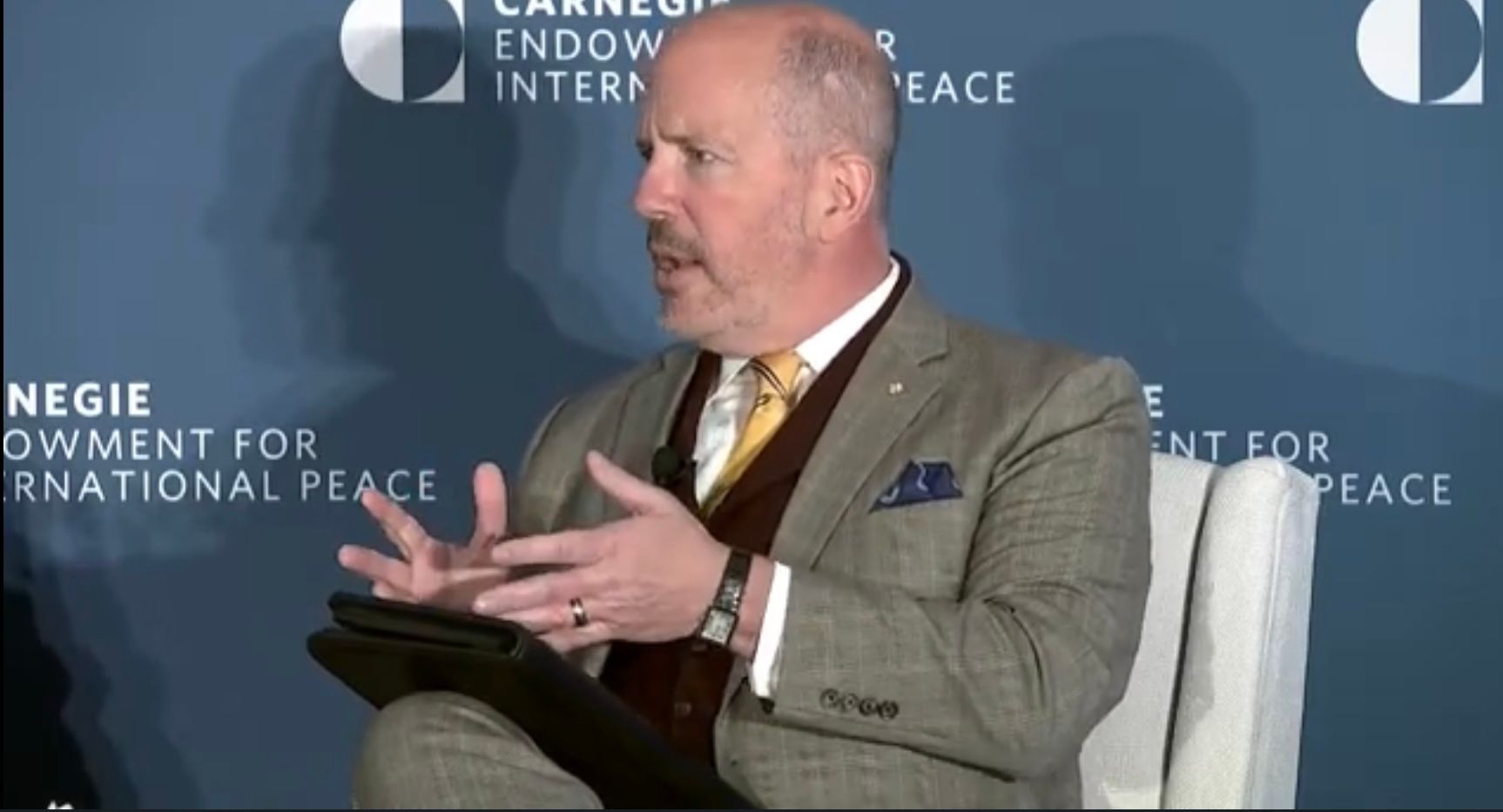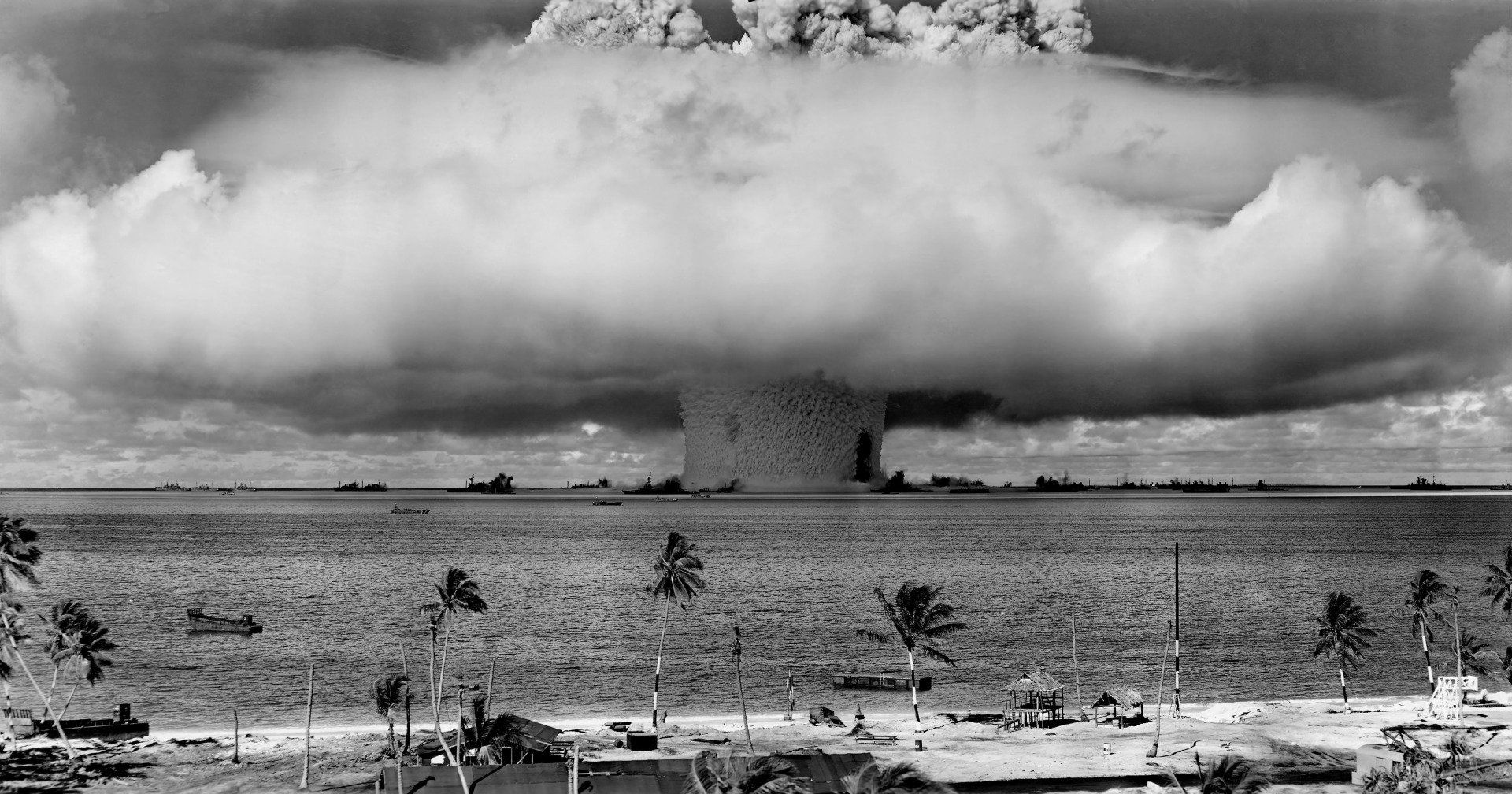A "Horizon Strategy" Framework for Science and Technology Policy for the U.S. Innovation Economy and America's Competitive Success
Dr. Christopher Ford • May 13, 2021
The MITRE Corporation published an important new study on U.S. Science and Technology (S&T) policy on May 13, 2021, authored by Christopher Ford, Charles Clancy, and Duane Blackburn. Below follows the executive summary of that document, but the full version can be found on MITRE's website.
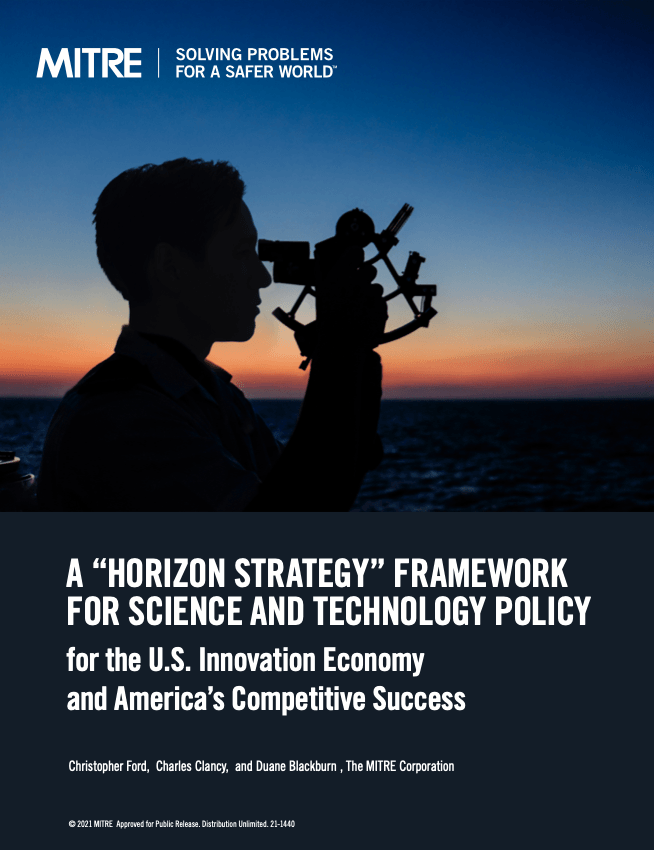
Executive Summary
President Biden has proposed a new national effort for federal investment in breakthrough technologies to “secure our global leadership in the most critical and competitive new industries and technologies.” He has also tasked his incoming Science Advisor
to review the nation’s science and technology enterprise and to develop recommendations on how to “continue to harness the full power of science and technology on behalf of the American people.” This is very timely, for the current U.S. innovation model has in multiple respects fallen short in the face of today’s technology competition challenges, including from the state-sponsored technology strategy China is employing in support of its geopolitical objectives.
First, the net American R&D investment portfolio currently struggles to fill the so-called “chasm” in the technology adoption life cycle between basic research and the development of specific, marketable commercial applications. This slows the pace and effectiveness of how new insights are carried forward into full deployment across a range of novel and evolved use cases. Second, the current U.S. innovation model sometimes struggles with complex challenges that cross technological “stovepipes.” It presently works well in areas such as software and services, but it seems to be falling short in connection with more capital-intensive and/or interdisciplinary work that is critical to meeting present-day challenges in key areas. Third, private sector actors often have neither the ability nor the incentive to address a range of broader, “ecosystem”-type challenges – or perhaps one should say “technosystem” challenges, as they relate, inter alia, to technology governance questions and the interaction of new technologies with broader societal, legal-regulatory, and policy dynamics – that are nonetheless essential to ensuring that technology is successfully incorporated into the innovation economy.
A new federal agenda for promoting S&T innovation must address itself to these market failures. To do this effectively, what is needed is a national-level effort: a synergy between government, industry, and academic activities to holistically address our nation’s most critical S&T priorities – while safeguarding the intellectual property, privacy rights, and autonomy of all participants and stakeholders. This new partnership will need to prioritize and steer federal R&D funding to overcome weaknesses in the current innovation model and to bring the requisite integrative, “system-of-systems thinking” to bear on relevant “technosystem” challenges in prioritized areas.
Its focus should be upon interdisciplinary and cross-sector problems that, despite their national-level significance, are: (a) too “applied” for basic research but too “upstream” for marketization; (b) too intricate and capital- intensive for a start-up; (c) have time horizons too long, risk profiles too steep, and immediately monetizable payoffs too indirect or speculative to justify significant individual investment from most private firms; and/or (d) involve a range of cross-sector coordination, public policy, legal/ regulatory, and other governance questions that no single private sector player could address on its own. It should also emphasize S&T governance initiatives to improve incentives facing private actors, to guide and adopt effective technology standards and ensure safety, confidence, and privacy protections across diverse and evolving future technology, to ensure security for various key aspects of the technology supply chain, and to ensure the availability (and nationwide connectivity) of a workforce well equipped for nationwide, decentralized next-generation design and manufacturing innovations.
This report offers an intellectual framework to help shape such an approach suggests organizational forms from which to learn in establishing effective public-private cooperation to enable the U.S. innovation community (across its many governmental, private sector, academic, and FFRDC components) to find a collaborative, voluntary way forward together in implementing a national “horizon strategy” to remedy market failures in today’s innovation economy and take advantage of technological opportunities in tomorrow’s. It also explains why certain key technology areas – Advanced Manufacturing (AM), Artificial Intelligence (AI), biotechnology, climate and energy, cybersecurity, health informatics, microelectronics, Quantum Information Science, and telecommunications – would likely particularly reward federal attention as part of the Biden Administration’s new agenda, and offers suggestions as to several additional points for prioritization in technology governance.
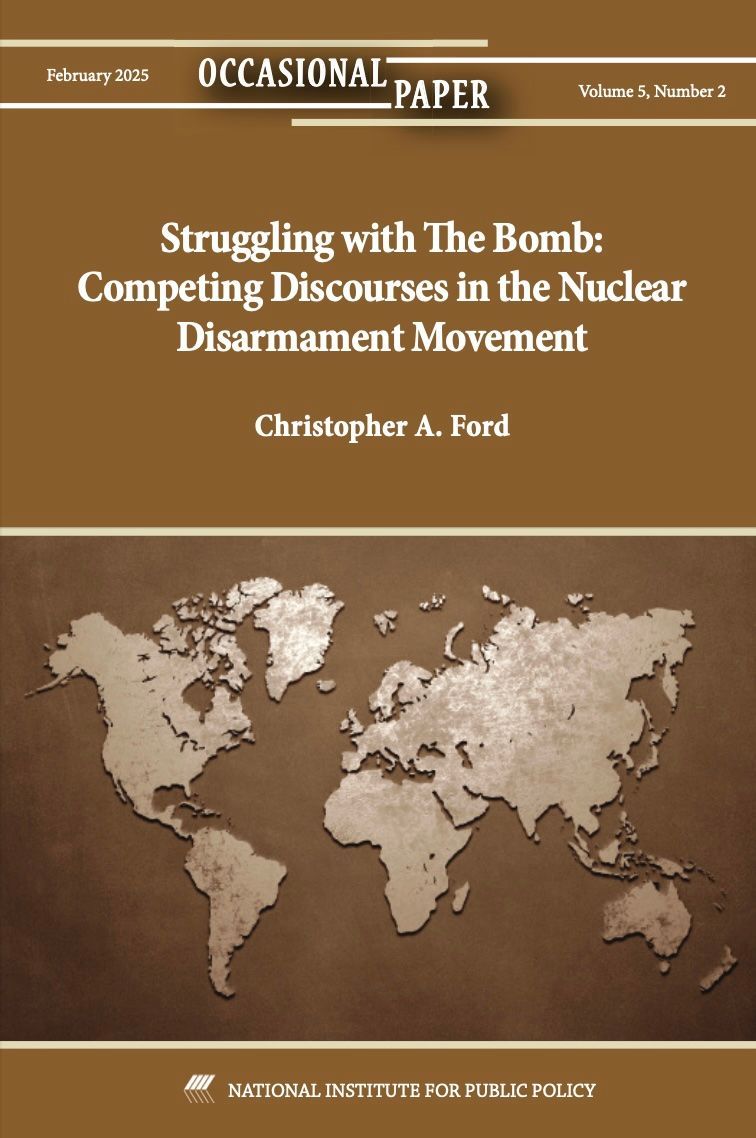
The National Institute for Public Policy (NIPP) published Dr. Ford's paper " Struggling with The Bomb: Competing Discourses in the Nuclear Disarmament Movement" in February 2025, as the second paper in Volume 5 of its Occasional Papers series. You can find Dr. Ford's paper on NIPP's website here , or use the button below to download a PDF.
Dr. Ford and Lord Nigel Biggar published their essay on " Rebutting Sino-Russian Political Discourse and Getting Rights Right" in the Winter 2025 issue of Defense & Strategic Studies Online (DASSO). You can find the DASSO homepage here , read the full second issue of DASSO here , access the Ford/Biggar essay online here , or use the button below to download a PDF of the essay.
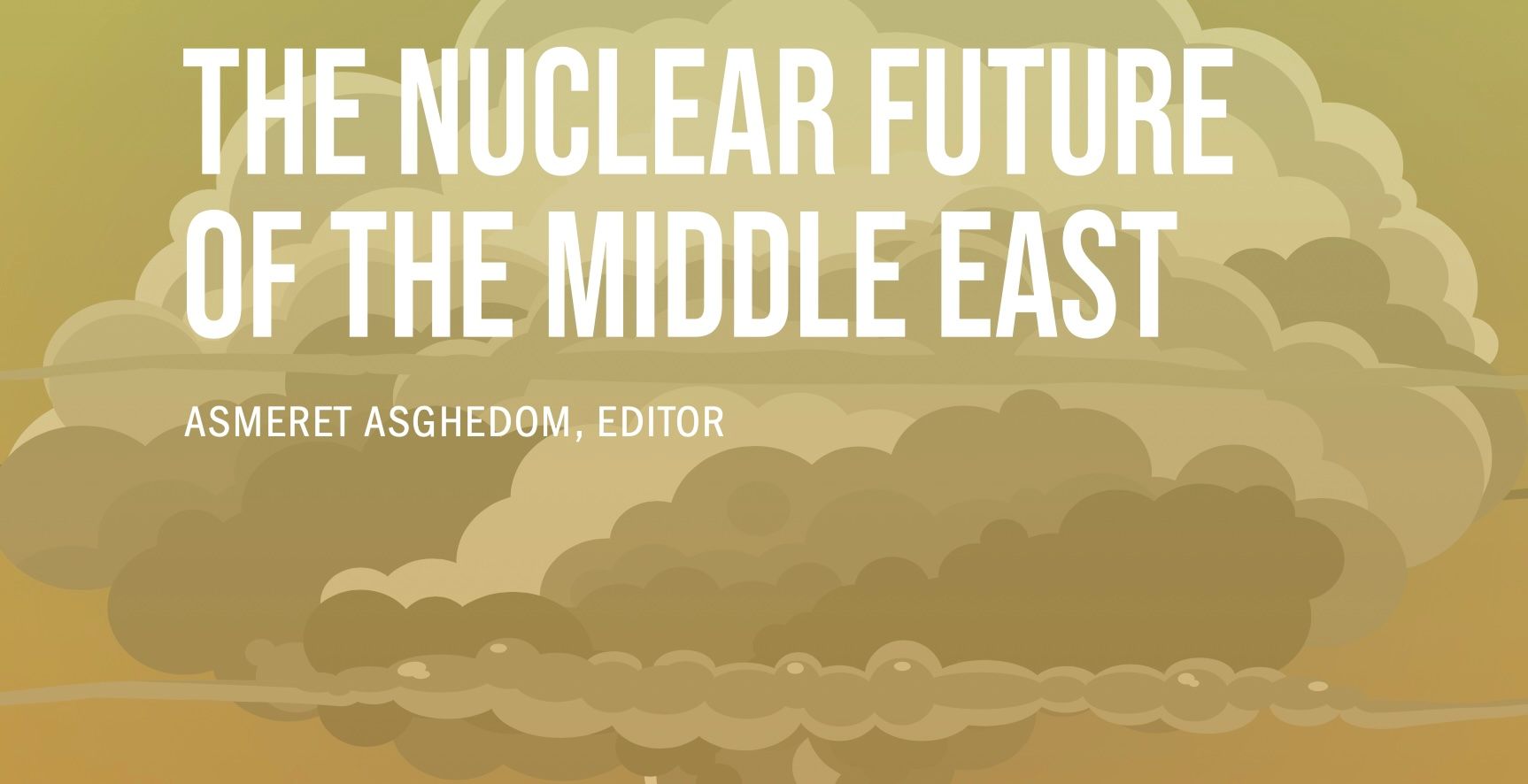
On February 6, 2025, the Center for Global Security Research at the Lawrence Livermore National Laboratory published a new edited volume on nuclear weapons challenges in the Middle East. Dr. Ford's paper "Snapping Back and Looking Forward: A New Old Approach to the Iran Nuclear Crisis" appears in that volume. You can find the whole book on CGSR's website here , or use the button below to download Dr. Ford's chapter.

With 2024 hours from being over, here’s a handy compilation of my public work product from the last year. As you can see from the list of seven papers or articles and 20 presentations below, it’s been a big year for nuclear weapons policy and arms control topics – but as always there’s a good helping of strategic competition with China. Keep checking New Paradigms Forum for new material as we move into 2025. And Happy New Year, everyone!
